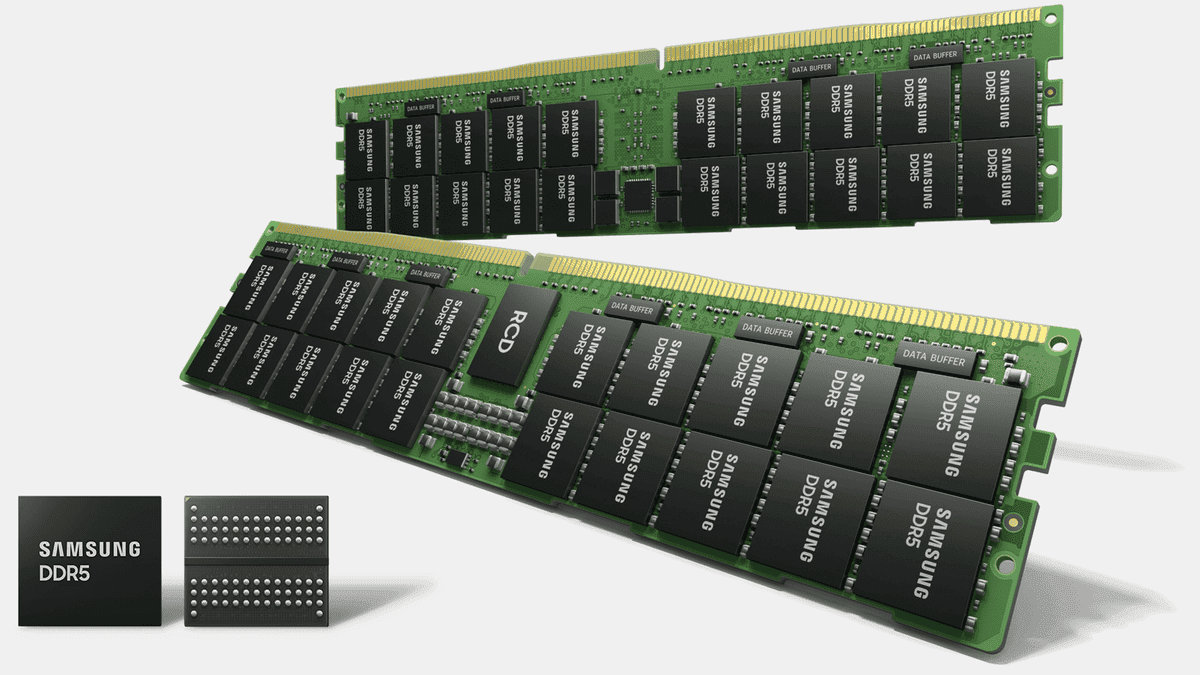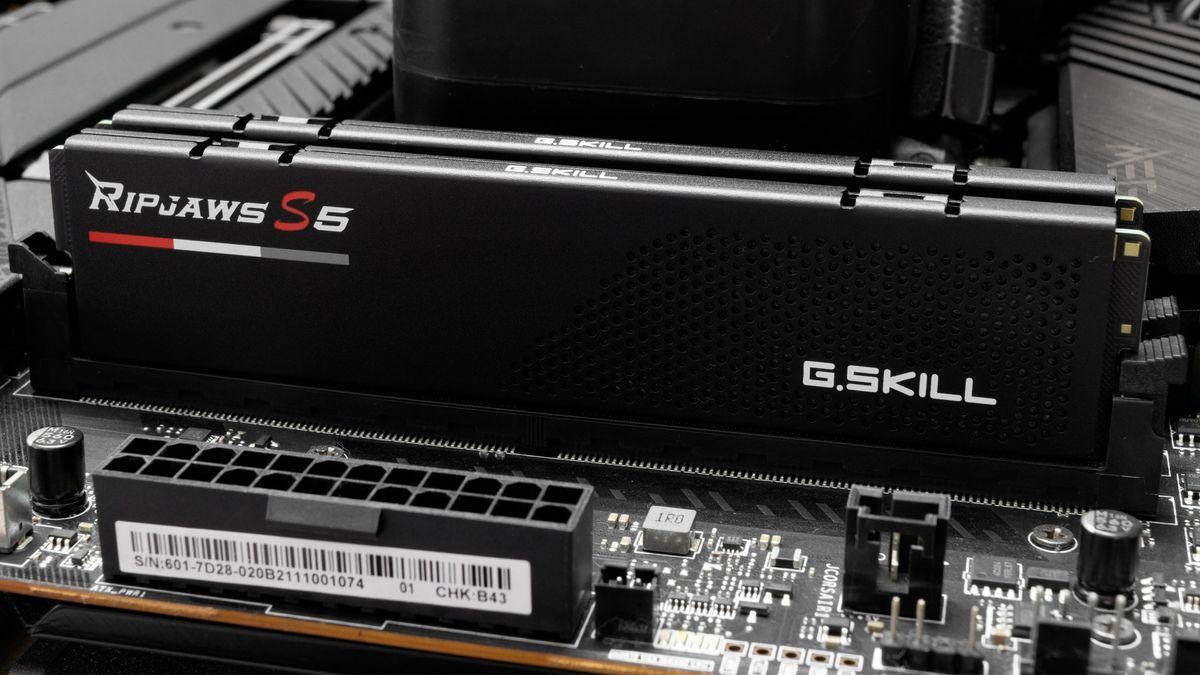Micron Announces Memory Price Hikes Amid Surging AI and Data Center Demand
2 Sources
2 Sources
[1]
Micron confirms memory price hikes as AI and data center demand surges
The price hike may prompt other manufacturers to follow suit Micron has confirmed its plans to raise memory prices, citing strong demand for DRAM and NAND flash in the years ahead. The company's latest announcement suggests that prices will continue to rise through 2025 and 2026 as supply constraints and growing demand from AI, data centers, and consumer electronics drive up costs. The price hike comes as the memory market rebounds from a period of oversupply and declining revenues. Over the past year, DRAM and NAND flash prices have steadily recovered due to production cuts by major suppliers and increasing demand for high-performance computing and AI workloads. With Micron confirming its intention to raise prices, other memory manufacturers such as Samsung and SK Hynix are expected to follow suit, further solidifying the upward pricing trend. In a statement to its channel partners, Micron cited "un-forecasted demand across various business segments" as a key factor behind the price increase. The company highlighted the increasing demand for AI-related applications and the necessity of maintaining a competitive product portfolio as drivers for these adjustments. Micron also encouraged partners to provide long-term forecasts to help ensure supply stability in the coming years. One of the key drivers behind the price increase is the growing demand for high-bandwidth memory (HBM), which is crucial for AI accelerators and next-generation GPUs. As companies like Nvidia, AMD, and Intel push for more advanced AI solutions, the need for faster and more efficient memory solutions has surged. Micron and its competitors are ramping up production of HBM to meet this demand, but supply remains tight, contributing to rising costs. The company recently announced an investment of $7 billion in a new HBM assembly facility in Singapore, aiming to meet the increased demands driven by AI advancements. The plant is scheduled to commence operations in 2026 and should enhance Micron's capacity to produce HBM3E, HBM4, and HBM4E memory, positioning the company to capture a larger share of the growing HBM market. Additionally, the broader consumer electronics market is expected to see a resurgence, with PC and smartphone manufacturers increasing orders for DRAM and NAND flash. As device makers prepare for new product launches in late 2025 and 2026, memory demand is projected to remain strong, further justifying Micron's price adjustments. With Micron setting the stage for a new pricing trend, all eyes are now on how competitors and customers will respond. If demand remains strong, the industry could see sustained price increases, impacting everything from gaming PCs to enterprise data centers in the years ahead.
[2]
Memory prices are about to rise. Here's why you should care
I wish this were April Fools, but it isn't. Micron has just announced that it'll be raising its prices all across its product portfolio, including DRAM and NAND flash memory. It seems that the price hikes will be gradual and won't just hit us out of nowhere, but the fact of the matter is that RAM will get pricier. This means that the best RAM might cost more, but this isn't limited to just straight-up PC memory. The company sent out a letter to its investors, which was later shared by Tom's Hardware, talking about the price increase and the reasons behind it. Micron notes that the memory and storage markets are finally on an upward trend after a period of lull over the past couple of years. We've seen this on the consumer end, too, with memory prices finally stabilizing -- DDR5 RAM was super pricey at first, but buying RAM is now easier than ever. (Not for long, perhaps.) Recommended Videos The growing demand drives a higher price point. Again, we're familiar with this, what with the crazy GPU prices right now. However, the consumer market is not to blame here; Micron says that the increasing need for memory and NAND flash in AI settings is what drove this need to increase the prices. In the world of enterprise memory, this really refers to high-bandwidth memory (HBM), which is necessary in data centers, covering usages like AI accelerators and AI GPUs. This might mean that one day, companies like Nvidia will spend more on DRAM and NAND flash, which are used in SSDs, as well as things like smartphones and USB drives; on the AI front, it powers the storage in massive data centers. What does this mean for the consumer market? With all the talk of AI, it's easy to feel that the consumer market will be safe from these price hikes -- but it won't. DRAM and NAND flash price increases mean that a whole bunch of things could potentially cost more in the long run. RAM kits are an obvious one, as are SSDs, but there are also other things that might be affected. If GDDR memory prices go up, we'll see some of the best graphics cards cost even more (and that's the last thing we need right now). Similarly, devices like smartphones and game consoles, which also rely on NAND-based storage, could be pricier over time. What's the good news, then? Well, the good news is that the increases in the consumer market should be smaller than whatever the folks responsible for massive data centers will experience. We might see a price hike, but it shouldn't be too horrible -- although, with the current prices of PC components, you never know. If you'd been hoping to buy some new RAM or a new SSD soon, you might as well go for it now before these price hikes kick in.
Share
Share
Copy Link
Micron confirms plans to raise memory prices due to increased demand from AI and data centers, potentially impacting consumer electronics and PC components.

Micron Announces Price Hikes for Memory Products
Micron, a leading manufacturer of memory and storage solutions, has confirmed plans to raise prices across its product portfolio, including DRAM and NAND flash memory. The company cites strong demand for these components, particularly in AI and data center applications, as the primary driver behind this decision
1
.Market Recovery and Demand Surge
The memory market is rebounding from a period of oversupply and declining revenues. Over the past year, DRAM and NAND flash prices have steadily recovered due to production cuts by major suppliers and increasing demand for high-performance computing and AI workloads
1
. Micron's announcement suggests that prices will continue to rise through 2025 and 2026 as supply constraints and growing demand drive up costs.Impact on AI and Data Centers
One of the key factors behind the price increase is the growing demand for high-bandwidth memory (HBM), which is crucial for AI accelerators and next-generation GPUs. As companies like Nvidia, AMD, and Intel push for more advanced AI solutions, the need for faster and more efficient memory solutions has surged
1
.Micron's Investment in HBM Production
To meet the increased demand driven by AI advancements, Micron recently announced a $7 billion investment in a new HBM assembly facility in Singapore. The plant is scheduled to commence operations in 2026 and should enhance Micron's capacity to produce HBM3E, HBM4, and HBM4E memory
1
.Potential Impact on Consumer Electronics
While the primary focus is on AI and data center applications, the price hikes are expected to affect the broader consumer electronics market as well. PC and smartphone manufacturers are likely to increase orders for DRAM and NAND flash, potentially leading to higher prices for various devices
2
.Related Stories
Consumer Market Implications
The price increases could impact a wide range of products, including:
- RAM kits for personal computers
- Solid-state drives (SSDs)
- Graphics cards with GDDR memory
- Smartphones
- Game consoles
While the consumer market may not see as significant price hikes as the enterprise sector, experts suggest that now might be a good time to purchase RAM or SSDs before the increases take effect
2
.Industry-wide Implications
With Micron setting the stage for a new pricing trend, it is expected that other memory manufacturers such as Samsung and SK Hynix may follow suit. This could lead to sustained price increases across the industry, affecting everything from gaming PCs to enterprise data centers in the coming years
1
.References
Summarized by
Navi
[1]
[2]
Related Stories
AI Demand Drives Memory Prices to Record Highs, Impacting Consumer Tech Market
31 Oct 2025•Business and Economy

AI Demand Triggers Component Shortage as Dell and Lenovo Plan 15% Price Increases for Servers
03 Dec 2025•Business and Economy

RAM and Storage Prices Surge 500% as AI Demand Triggers Global Memory Crisis
26 Nov 2025•Business and Economy

Recent Highlights
1
Google launches Gemini 3 Flash as default AI model, delivering speed with Pro-grade reasoning
Technology

2
OpenAI launches GPT Image 1.5 as AI image generator war with Google intensifies
Technology

3
OpenAI launches ChatGPT app store, opening doors for third-party developers to build AI-powered apps
Technology





